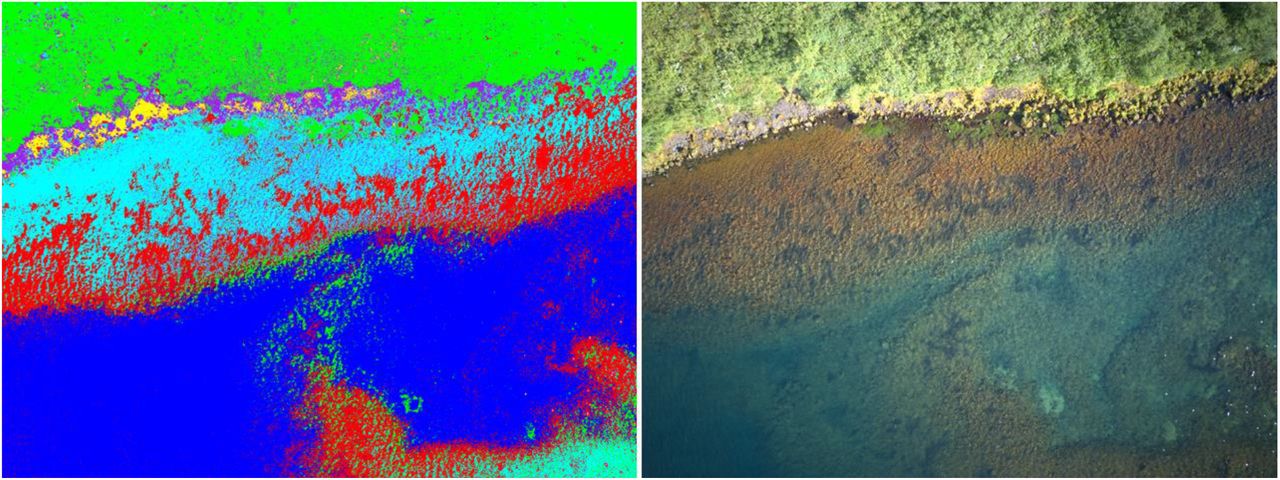Monitoring fish spawning sites in freshwater ecosystems using low-cost UAV data

A pre-print of a case study of salmonid spawning grounds in lake Þingvallavatn, Iceland, has been added to the bioRxiv preprint server.Here is the abstract of the draft paper:
Low-cost unmanned aerial vehicles (UAV), widely known as drones, have become ubiquitous and improved considerably in their technical capabilities and data quality. This opens new opportunities for their utilisation in scientific research that can help to reduce equipment and data collection costs. Remote sensing methods in ecological fieldwork can be a suitable approach to complementing, augmenting or even replacing certain aspects of fieldwork. In this study we tested the suitability of UAV for the detection of salmonid spawning grounds in two lakes in Iceland, Thingvallavatn and Ellidavatn. Salmonids are very susceptible to environmental changes, especially during embryonic development when highly oxygenated water flow and low temperatures are required. Monitoring the changes of the redd density over time will help understand the population dynamics of salmonid species and create strategies for species conservation. As part of this pilot study, we conducted aerial surveys during the spawning seasons in both locations in 2018 recording standard photographs in the visible spectrum (red, green, blue) to fully cover the respective areas of interest. Different flight altitudes were recorded to test the effects of image resolution on the final analyses. The images were then processed by applying standard remote sensing analyses in the software ENVI. The maximum likelihood classification combined with post-classification improvement methods resulted in satisfactory accuracies that are valuable for further monitoring efforts. From these findings we established a workflow that allows the implementation of UAV in ecological fieldwork for regular long-term observations. We discuss our experiences with regards to their utility, their limitations and identify future directions of research for implementing the potential that low-cost approaches have in supporting ecological studies of freshwater ecosystems.

A-C: Aerial images of Ólafsdráttur spawning grounds at different altitudes: 10m (A), 50m (B), and 100m (C). D: close-up view of the dark spawning redds that are made by salmonids.